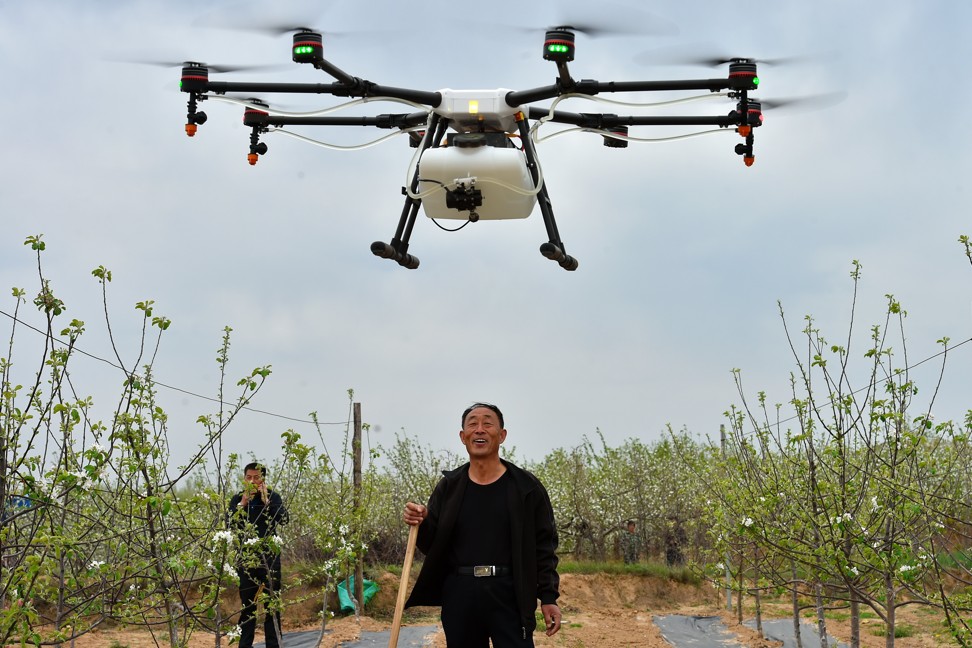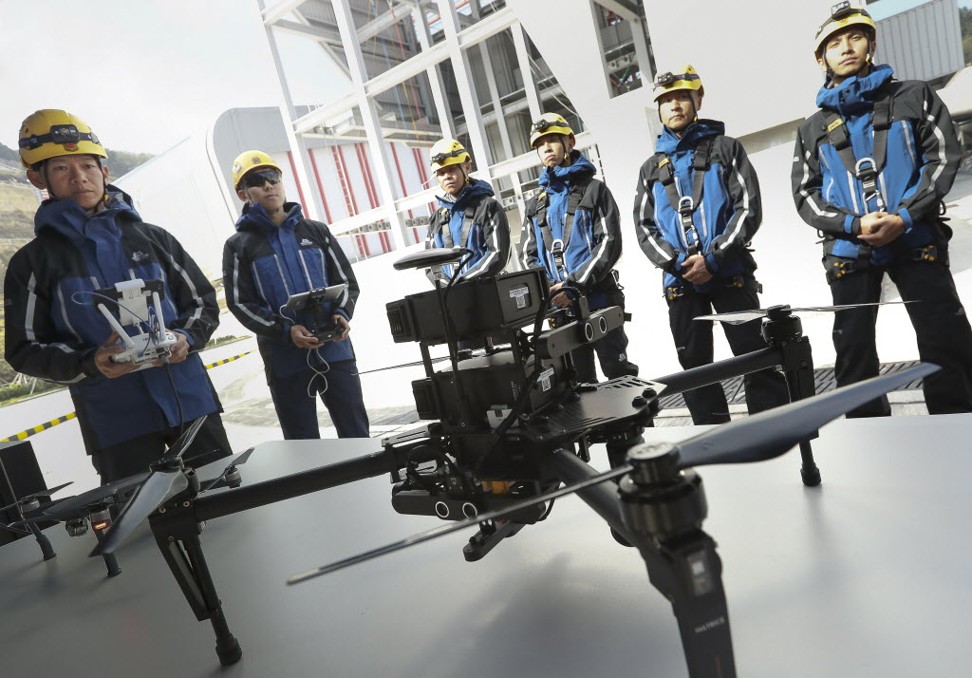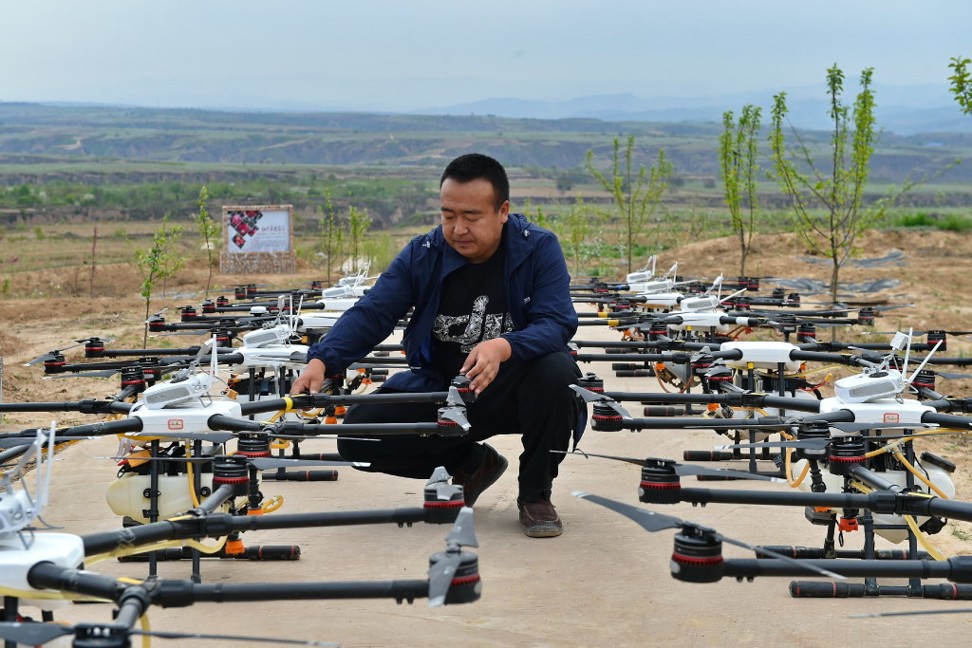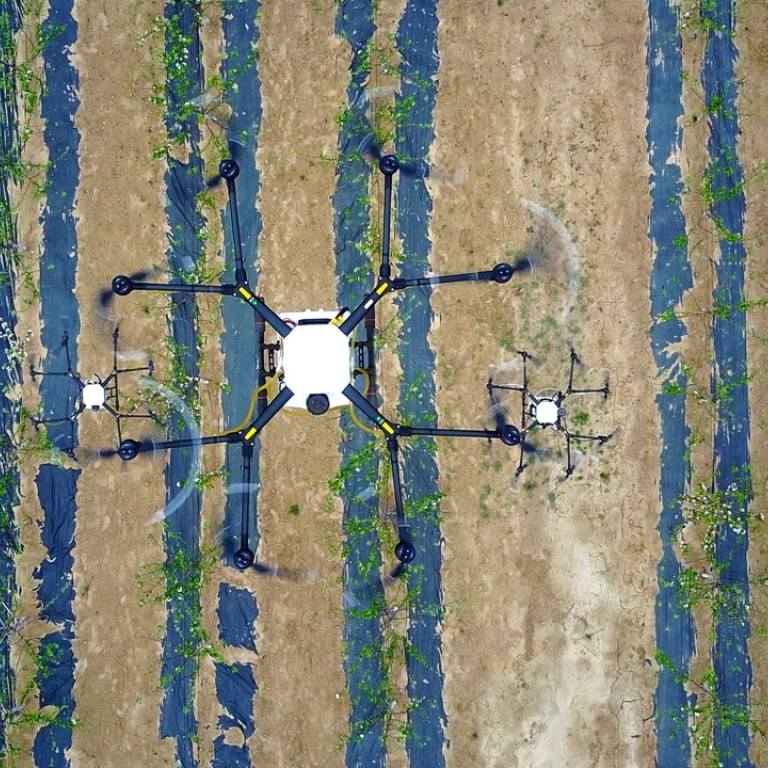
How China’s cutting-edge drones are transforming the nation
From monitoring pollution to displaying ‘fireworks’ to revolutionising farming, the sky’s the limit for these hi-tech flying machines
In a small industrial area of Dongguan, a city in southern China’s Guangdong province, a drone hovers 150m above the ground. The IntelFlight device, equipped with a sensor that detects eight types of air pollutant, is collecting data after a resident reported an unpleasant odour to the environmental authorities.
After circling for about 20 minutes, the drone transmits the information it has collected to a monitor held by its pilot in the form of a digital map with different coloured markings. A series of red dots on the map indicate the areas emitting the highest concentrations of volatile organic compounds and after studying them, the environmental inspectors quickly locate the source of the pollution – a plastics factory with a concealed chimney.
“With the help of drones, any resident can now pick up their phone and stop pollution within hours,” said Fang Jiawei, a product manager at Guangdong IntelFlight UAV, which provides drone services to the Dongguan government.
Dongguan, one of the world’s biggest manufacturing hubs, is home to more than 300,000 factories making everything from shoes to smartphones, and all crammed into a region about the size of Hong Kong. About 200 environmental inspectors oversee the plants’ emissions.
The use of pollution-detecting drones has helped the city identify and punish tens of thousands of polluting factories, and cut the number of smoggy days to just 12 last year from 104 in 2015, when the devices were introduced as part of an environmental clean-up campaign, according to the local environmental protection bureau.
In the past, residents would regularly don face masks on the streets to protect themselves from the smog. But the practice has since waned as the city’s air quality is now ranked among the best in China. The average PM2.5 level – the small polluting particles deemed most harmful to health – is 35 micrograms per cubic metre, close to that of downtown Paris.
“We’re not just impressed by the results, we’re shocked,” Fang said.
Clean ‘fireworks’
Drones are being used not only to detect pollution, but also to curb emissions. They are even transforming the thousand-year-old Chinese tradition of setting off fireworks, which are notorious for producing as much air pollution as they do noise.
At the global premiere of Hollywood action franchise Transformers: The Last Knight in Guangzhou, capital of Guangdong province, last month, Chinese drone firm Ehang used 100 of its devices for a “fireworks” performance lasting several minutes. The flights of the unmanned aerial vehicles were synchronised to create patterns in the sky, including one of the face of Optimus Prime, a central character in the film.
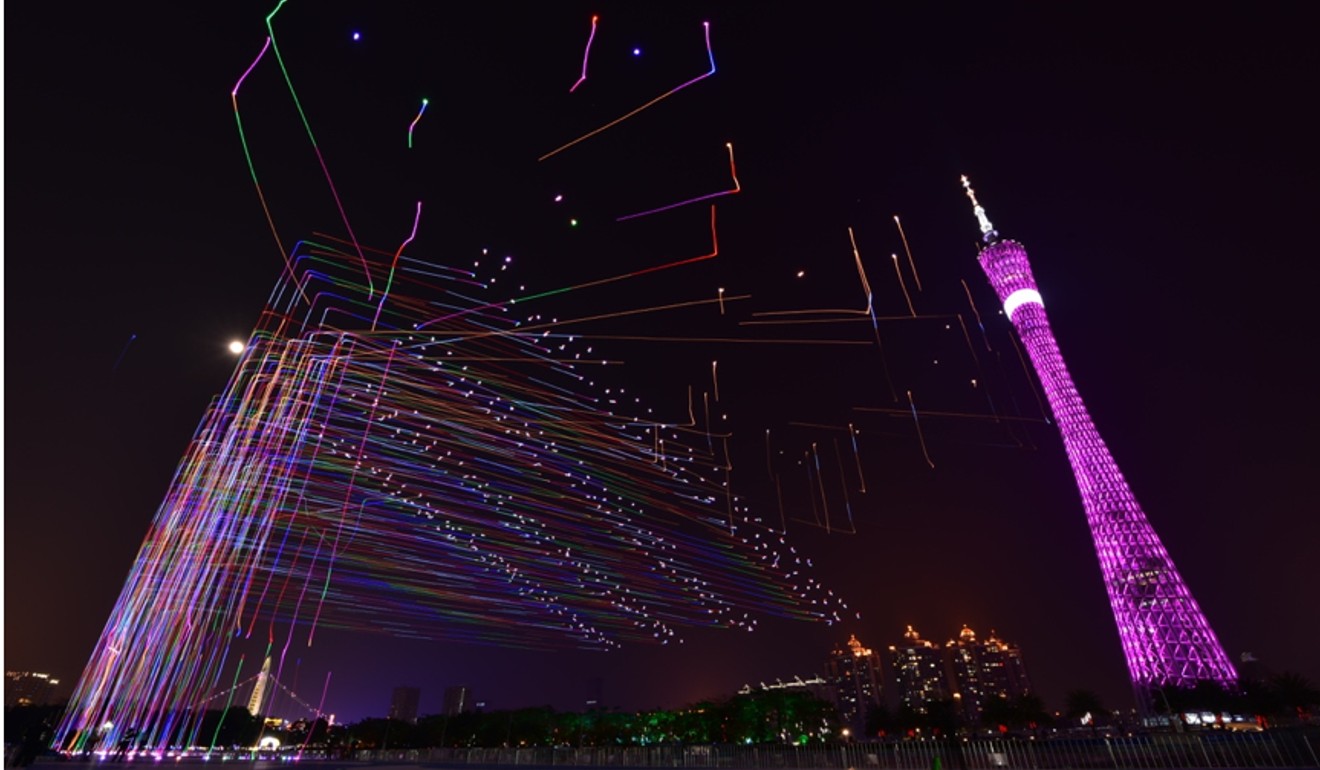
In February, Ehang set a world record when it used 1,000 drones to fill the night sky with brilliant colours and dazzling patterns at an event to mark the end of the Lunar New Year holiday in Guangzhou. The use of such clean, reusable “drone fireworks” might one day replace traditional rockets and bangers altogether, the company said on its website.
“[We’ve used] a hi-tech product to transform a [traditional] show,” Ehang said in reference to the Lunar New Year event. “As people’s environmental awareness grows, they will find ‘drone fireworks’ not only safer and cleaner than traditional ones, but also more exciting and more beautiful.”
China is the world’s biggest producer and user of fireworks, manufacturing more than a million tonnes of them every year, according to industrial estimates. Despite their popularity, they produce huge amounts of harmful pollutants, like sulphur dioxide, and have been blamed for the annual peak in winter air pollutant levels in many Chinese cities, according to the environmental authorities.
Applications abound
It’s not just in the field of environmental protection that drones are transforming life in China. They’re also being used to deliver parcels, identify exam cheats and even assess conditions in disaster zones, which would otherwise be difficult to reach.

In June, Chinese courier company SF Express became the first in the country to be granted approval to use drones for logistics purposes, news portal Thepaper.cn reported. Earlier the same month, Chinese education authorities used drones to help combat cheating during the annual university entrance exams, Reuters reported. And in 2015, when a warehouse explosion devastated the port city of Tianjin, the People’s Insurance Company of China turned to Chinese-made drones to analyse and estimate the extent of the damage for German carmaker Volkswagen.
“The rise of drones in China isn’t an accident”, said a Beijing-based researcher involved in developing related technology for the Chinese military. As the world’s largest manufacturer, China can quickly mass produce new technology at low prices.
In Shenzhen alone – a major manufacturing base in Guangdong – there are more than 300 companies involved in taking drone technology in new directions, according to the researcher, who asked not to be named because of the sensitivity of his job.
“In other countries, the most advanced drone technologies are first adopted by the military before finding a civilian use. In China, sometimes it can be the opposite,” the researcher said. Zooming in on an industrial polluter, for instance, can be as technically challenging as catching terrorists in the Gobi Desert, as both tasks require the use of different sensors and sophisticated algorithms, he said. “Drones can enhance or even save lives.”
The devices are not without their problems, however. There have been many reports in the Chinese media of drones flying into restricted airspace, disrupting signals and causing temporary airport closures. In an effort to control the situation, the Civil Aviation Administration of China introduced a new policy, which took effect on June 1, requiring all Chinese pilots of recreational drones to register their names with the regulator.
Good quality drones can also be prohibitively expensive to individuals and small businesses. Operating them well requires a lot of skill and practise, while battery issues limit their range and how long they can remain airborne.
Nevertheless, the expanding range of applications for drones in China and a rapidly increasing user base have created huge market potential. The domestic market is expected to grow tenfold to 200 billion yuan (US$29.4 billion), according to a Shenzhen government estimate released this year.
China is already home to the world’s leading drone firms, like Beijing’s Ehang and Shenzhen-based DJI, while Shenzhen is where more than 70 per cent of the world’s drones are currently made.
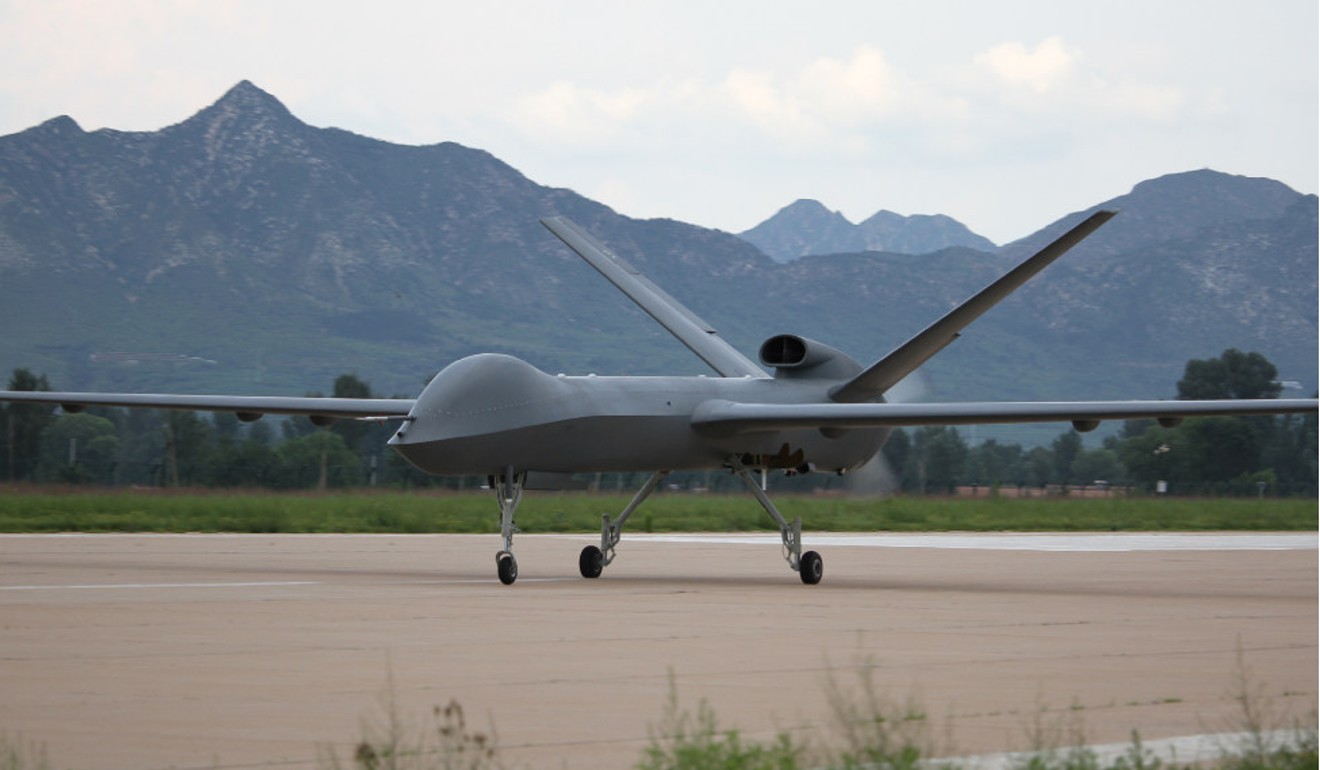
Transforming farming
Another major application for drones is in agriculture. Liu Jun, a farmer from the village of Dongan, Yanshou county, in northern China’s Heilongjiang province, said that this summer it was almost impossible to cross a field without hearing the buzzing of drones.
“That wasn’t the case last year. Then, boom, there were drones everywhere. And they’re doing all the dirty and harmful work such as spraying crops with pesticides and disease prevention drugs,” Liu said.
“Overnight, their performance [in the agriculture sector] has changed farmers’ suspicions of new technology. Now almost every farming family in our village has either bought or hired a drone.”
Heilongjiang, which spans more than 13 million hectares of flat, fertile farmland, churns out more agricultural products than any other province in China. According to government statistics, its annual food output is enough to feed everyone in China for nearly two months.
As in many other parts of China, however, Heilongjiang’s agriculture sector is facing a growing labour shortage as young people head to the city in search of better pay and less physically demanding work.
“Drones are saving us,” said Liu, who helped set up Dongan’s “drone squadron”. More than 20 young people in the village are training to become professional drone pilots this year. Last year, the number was just one, he said.
A drone pilot earns 15 yuan for spraying pesticide over a hectare of farmland. The best pilots can cover 15 hectares in a day.
“It’s easy for a drone pilot to earn more than 10,000 yuan a month,” Liu said, adding that few city jobs open to migrant workers pay more.
Employing drone pilots saves farmers money, too, as they don’t need to recruit lots of people to spray pesticides. Also, as awareness of the hazards of chemicals has grown, fewer young people have been willing to do the job the traditional way.
Drones perform better and are more precise than the traditional aircraft sometimes used for crop spraying. The devices fly at a slower speeds and lower altitudes, which allows them to cover almost every corner of the fields.
Liu said that a recent software upgrade even allows the drones in his village to be operated independently of a human pilot. Once the boundaries are marked out using a smartphone app, the drone generates an optimal flight plan, and takes off and lands all on its own.
“What has happened in my village can happen in many other villages across China,” Liu said, adding that even older farmers are now embracing the technology.
“Old Chinese farmers drive tractors. Modern Chinese farmers fly drones,” he said.


